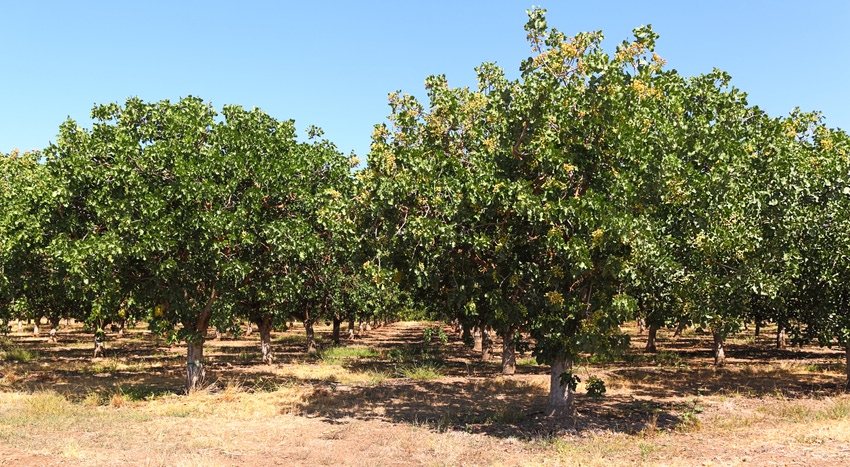
Raising Navel orangeworm (NOW) in mass indoors, sterilizing the moths, and release into orchards in sufficient numbers to reduce native populations is the preliminary focus of a sterile insect technology (SIT) project under consideration by the California Pistachio Research Board (CPRB).
The Board’s technical director Bob Klein says adopting this technology is critical in the fight to suppress this major pest in pistachio and lower the percentage of NOW-damaged nuts which currently cost growers millions of dollars in losses annually.
Last year, Navel orangeworm (Amyelois transitella) damage to California pistachios reached two percent, one of the highest damage levels in recent history. About 18 million pounds of pistachios were rejected by processors due to NOW damage, Klein says, and uncounted millions of pounds of damaged nuts were left in orchards statewide.
The insect pest causes direct damage to nuts making them unmarketable. In addition, NOW-caused wounds in the nut shell allows for mold growth which can cause aflatoxin.
“The loss of pistachios and the costs to sort out damage and market rejection due to aflatoxin are costing the industry over $100 million a year,” Klein told pistachio growers and processors at the annual Statewide Pistachio Day event held in January at Visalia, Calif.
Current NOW control efforts include pesticide applications, mating disruption, and orchard sanitation yet crop damage continues to increase. 2016 crop damage could suggest that current controls have maxxed out in effectiveness, says Klein.
Plus, new risk assessments by the Environmental Protection Agency threaten the continued use of the effective pyrethroid bifenthrin for NOW control.
With funding from the CPRB, sterile insect research for NOW control is currently underway at the pink bollworm rearing facility at Phoenix, Ariz. Jeff Gibbons of Setton Pistachio confirms that the NOW sterile insect project is moving forward with the first scheduled limited sterile moth release this summer.
The SIT facility, owned by the California Cotton Growers Association and operated by USDA, was to close this year due to the near eradication of the pink bollworm pest in cotton using SIT. Continuing the program to develop NOW sterile insects would help retain the experienced staff to mass raise sterile months and the permit to use irradiation material.
Gibbons admits that a sterile insect rearing program for NOW will be a challenge to accomplish. Yet considering what is at stake for the pistachio and almond industries he believes the technology could provide another tool for growers to protect crops from NOW.
Efforts to raise grower and processor assessments make sense if the industry is going to pursue the sterile insect technology, Gibbons says. A California Department of Food and Agriculture hearing to raise the assessment from one-half cent per pound of pistachios to 1.5 cents per pound of assessable pistachio weight was held in Visalia on Jan. 18. Several growers and CPRB board members testified in favor of the new maximum assessment.
Sterile insect technology has been critical towards the near pink bollworm eradication in cotton throughout the Southwest. The sterile moth process previously helped eradicate the screwworm in the U.S.
The sterile moth process includes mass raising the target insect, sterilizing the adults, and releasing the steriles over orchards or fields at specific times.
A successful NOW sterile insect program would be more complicated though since the pest has a wider range of host plants, large populations of insects, and a strong flying ability.
Selection of a strain of NOW, collection of eggs, larvae and adult moths, diet for life stages, and sterilization levels are all critical to the success of the program. Timing, numbers, and the mode of release must be determined.
SIT by itself may not be the total answer to NOW control, Klein says. Other techniques being explored to mass rear sterile insect pests include sterility genes and gene editing technology.
Gibbons says if SIT becomes a viable control option for NOW, the almond industry may want to join with the pistachio industry to work together to reduce NOW damage in orchards.
About the Author(s)
You May Also Like




